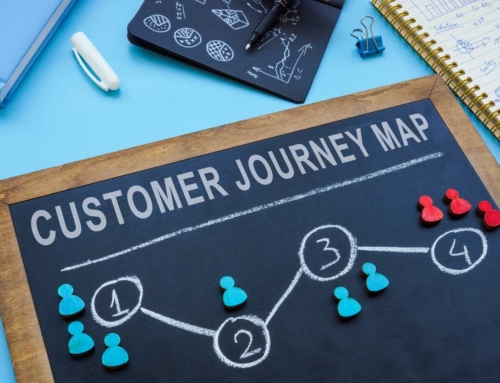5 Advantages of Cross-Selling to Your Customers

Looking for ways to bring in more revenue—without dropping loads of cash on customer acquisition? Cross-selling is one of the best ways to do just that. But cross-selling requires a special skill set that needs to be executed just right for it to provide maximum benefits.
Check out our guide to learn more about the advantages and disadvantages of cross-selling, along with tips for developing cross-selling skills.
What Is Cross-Selling?
Before we dive into the advantages of cross-selling, let’s discuss the basics: What is a cross-sell opportunity? Simply put, cross-selling is when you sell a customer something in addition to the product or service they were originally shopping for.
This sales technique is all around us, from the “recommended items” on Amazon to the “similar searches” on Google. Cross-selling is a great way to maximize the value of each customer—but it’s not just about the benefit to your company. When done right, customers love cross-selling, too, since it helps them discover more goods and services to enhance their lives.
How Does Cross-Selling Differ From Upselling?
Cross-selling and upselling are sales terms that often go hand-in-hand, but that doesn’t mean they can be used interchangeably. While cross-selling is about encouraging a customer to add more items to their shopping cart, upselling is about encouraging a customer to choose a more expensive, high-end version of the same product.
Cross Selling and Upselling Example
An example of cross-selling is when you encourage a customer to buy a pair of headphones and a case to go along with their new smartphone. You’re upselling if you suggest that the customer buy a more expensive, updated smartphone model. As you can tell, both of these tactics played correctly could bring in larger revenues to your business.
Advantages of Cross-Selling
So what are the benefits of cross-selling? And why are add-on sales important?
While we can’t cover every possible benefit in this article, here are just a few of the top reasons to incorporate this sales technique.
1. Helps Customers Feel Understood
The best cross-selling helps customers feel understood. Say you’re a retail salesperson who shows a customer a great pair of shoes to go with their new jeans. If you’re right on target, they’ll form a greater connection with you and your brand, feeling like you really understand their personality and connect on a higher level.
2. Builds Loyalty
Customers who feel a stronger connection with your brand are more likely to stick around for the long haul. In fact, these customers might even turn into brand ambassadors who spread the word about your business to friends and family. When you offer not just one, but several products the customer loves, they’ll become devoted to your brand, saving you money by reducing churn rates.
3. Increases Earnings
Of course, a customer who buys multiple products or services will help to boost your earnings more than a customer who buys just one product. But there are other, more subtle ways that cross-selling can increase your earnings, too. If cross-selling increases customer satisfaction, you’ll save money by spending less time and resources on customer acquisition.
4. Greater Convenience
Today’s consumers prize convenience. No one wants to go driving from store to store to find every product they’re looking for. And even jumping from one website to another can be a headache. So when you cross-sell them a product they really love, your customers will be glad to come back time and time again. Strive to become a one-stop shop, and you’ll have an easier time beating out the competition.
5. Moves Customers Through the Buying Journey
As any experienced salesperson knows, customers sometimes tend to draw out purchasing decisions over long periods of time. They might debate about whether or not they need an item, spend time shopping around for the best price, or wait for a great sale. But cross-selling can give customers the added boost they need to move through the buying journey, increasing their motivation to pick up everything they need in one place.
Possible Disadvantages of Cross-Selling
With all of the benefits of cross-selling, it’s important to note some of the potential disadvantages, too. As we mentioned before, cross-selling is an art, and it needs to be done right in order for it to be most effective. Here are some of the possible downsides of cross-selling (if it’s executed poorly).
1. Might Disrupt Customer Relationships
While cross-selling a valuable product can boost customer satisfaction and increase brand loyalty, cross-selling the wrong product can have the opposite effect. Imagine this: You’re a customer browsing a sports website, and you add a soccer ball and cleats to your shopping cart. Then you get a pop-up suggesting you purchase an expensive surfboard while you’re at it.
Since these products aren’t correlated in any way, the suggestion will likely leave you confused and annoyed. To avoid this pitfall, make sure you really get to know your customers before cross-selling—and only offer products that will clearly enhance the user experience.
2. May Attract Difficult Customers
The goal of cross-selling is to encourage customers to purchase more products from your company. But sometimes this can backfire, even if they are buying items you suggest. For example, some customers might create more headache than they’re worth, returning the items you’ve cross-sold or backing up your customer service channels with attempts to cancel orders.
Make sure you’re cross-selling to customers you really value, and choose products you think they’ll really love—otherwise you may end up with a customer service hassle.
How Successful Is Cross-Selling?
Despite the numerous benefits of cross-selling, many companies don’t approach it with a clear strategy, which is why most organizations with cross-selling mandates don’t meet their targets.
However, don’t let that fact dishearten you. Cross-selling, when implemented the right way, will significantly maintain your growth trajectory. Since most companies earn approximately 60 percent of their profit from existing customers, cross-selling makes a lot of financial sense.
Make this technique a success with the following tips:
Understand Your Customer’s Needs
Don’t stop at knowing how your products or services can address your customer’s problems. Instead, anticipate solutions for their potential needs by asking questions.
Once you have a deeper understanding of their needs, create complementary offerings by bundling your products. Another savvy approach is to recommend a tailor-fit solution for their issues.
Work with Motivated, Knowledgeable Sales People
Cross-selling becomes successful largely because of your sales force. They must have a firm grasp of your products and services, including how these can complement one another. At the same time, they should also have a pulse on the customer’s needs for a timely, appropriate response.
It’s also essential to motivate your salespeople through incentives. Reward them meaningfully for their efforts so they’ll be more proactive in cross-selling.
Establish Good Customer Relationship
One of the benefits of cross-selling is customer loyalty. If you always provide top-notch service to your clients, they’re likely to trust and turn to you for their subsequent needs.
There’s no need to compete for their attention; your company is already on their mind. You don’t have to spend as much money or time on marketing efforts. Instead, you can invest these resources in other endeavors.
How Do You Motivate Cross-Selling?
If you’re new to cross-selling, you may be intimidated as you learn this important sales technique. Fortunately, ROI Solutions is here to walk you through it. By outsourcing your cross-selling or upselling to us, you’ll be sure to have experienced sales professionals who know how to properly execute this type of sale.
We’ll act as an extension of your existing company and show you ways to improve your sales across the board. We provide detailed reports and act with integrity throughout every customer interaction. Contact us today to learn how we’ve helped countless businesses like yours grow their company through the art of cross-selling.





![How To Get Leads for Insurance Sales [6 Best Methods]](https://roicallcentersolutions.com/wp-content/uploads/2021/06/iStock-1207861941-500x383.jpg)
